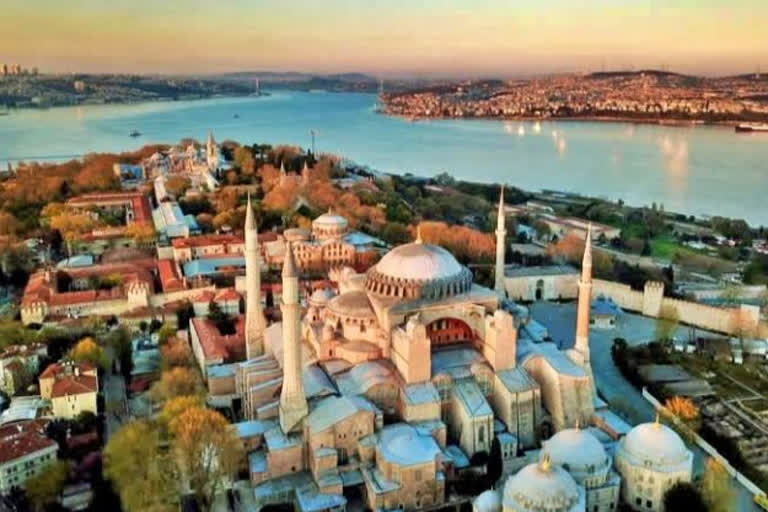Istanbul: Thousands of Muslim faithful made their way to Istanbul's landmark Hagia Sophia on Friday to take part in the first prayers in 86 years at the structure that once was one of Christendom's most significant cathedrals, then a mosque and museum before its reconversion into a Muslim place of worship.
Turkish President Recep Tayyip Erdogan is scheduled to attend the inaugural prayers inside the sixth-century monument along with around 500 dignitaries, as he fulfils what he has described as the "dream of our youth" anchored in Turkey's Islamic movement.
Thousands of men and women, including many who traveled from across Turkey, quickly filled specially-designated, segregated areas outside of Hagia Sophia, to be part of the first prayers. Several camped near the structure overnight. Dozens of worshipers broke through one police checkpoint to rush toward Hagia Sophia and social distancing practices, in place due to the coronavirus outbreak, were being ignored, Turkish media reported.
Orthodox church leaders in Greece and the United States, meanwhile, were scheduled to observe "a day of mourning" over the inaugural prayers.
The 6th-century monument, which remains the main feature of the Istanbul skyline, has a history rich with symbolism.
THE BYZANTINE ERA
Hagia Sophia, or the Church of Holy Wisdom, was built by the Byzantine Emperor Justinian I on the site of a destroyed basilica of the same name. Completed in 537, it was among the world’s largest domed structures and would serve as the foremost Orthodox Christian church for some 900 years. Imperial ceremonies, including the crowning of emperors, were held there. The multicoloured mosaics depicting the Virgin Mary, the baby Jesus, angels and other Christian symbols along with emperors and their families that centuries of rulers installed added to its reputation as an architectural gem.
THE OTTOMAN CONQUEST
Ottoman sultan Mehmet the Conqueror defeated the Byzantine Empire and captured Istanbul, then known as Constantinople, in 1453. The 21-year-old immediately turned the majestic Hagia Sophia into a mosque as an emblem of Muslim triumph over the city. The structure served as an imperial mosque and subsequent sultans added minarets, a school, library and a fountain, completing its transformation into a mosque complex. The mosaics were eventually plastered over in line with iconoclasm traditions that bar the depiction of figures.
